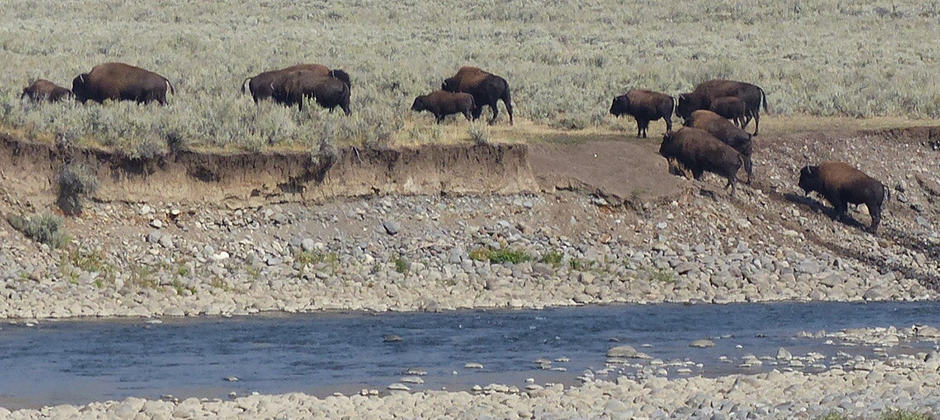Share this article
Yellowstone’s growing bison herd is damaging ecosystems
Bison have made an incredible comeback in Yellowstone National Park, from only 22 in 1901 to more than 4,000 today. But in the Lamar Valley, in the park’s northeastern corner, researchers found the swelling bison numbers have halted ecosystem recovery by trampling, eating and destroying woody vegetation.
“The Park Service gets a lot of credit for saving the last bison,” said Robert Beschta, an emeritus professor in Oregon State University’s Department of Forest Ecosystems and Society. “Now, it’s ironic that in doing so and allowing them to multiply to the levels they’re at today, we now end up with another story of the ecosystem being negatively impacted by an iconic species that everybody loves.”
Beschta led a study on the Lamar Valley bison (Bison bison) published in Food Webs to find out what impacts the bison were having on the ecosystem.
Prior to the research, Beschta and his OSU colleague William Ripple, a co-author on the paper, had been documenting the effects of too many elk (Cervus canadensis) on woody vegetation in the northern portion of Yellowstone. When gray wolves (Canis lupus) returned to the park in the mid-1990s, the researchers found they kept the elk in check and young plants began to sprout up again.
But in some areas, Beschta and Ripple found, the plants were not coming back. “One of the places that’s a poster child of this situation happens to be the Lamar Valley,” Beschta said, a place where wolves are active.
In the Lamar Valley, elk browsing dropped off, but that of bison increased, preventing the recovery of previously degraded plant communities, the team found. “The predators work very nicely on elk,” he said. “But they’re incapable of controlling bison numbers.”
The team chose a 10-square-kilometer area of the valley and measured all of the cottonwoods, aspens and conifers — long-lived species that had past data, which researchers could use as a comparison. They found that many small diameter trees were not present, indicating that young trees have not been able to grow over the years. Photo analysis also showed that about 7.5 hectares of aspen stands in the valley in 1954 had decreased to one-tenth of a hectare by 2015 —about a 99% loss.
The woody plants’ inability to grow and reproduce began with elk, Beschta said, but bison have exacerbated it, and unlike elk, bison stay year-round, trampling and eating the vegetation and rubbing their horns on tree bark, even during the summer. In northern Yellowstone today, bison foraging pressure is 10 times greater than that of elk.
“The effects of bison have to be reduced significantly,” Beschta said. “There has to be a really substantial reduction in the impacts before recovery of plant communities could begin to occur to take major effect.”
The bison’s impacts to the ecosystem can affect a variety of species, he said. Songbirds might not find nesting habitat or insects. Bears may not be able to find berries. Beavers won’t have materials to build dams with. “There’s a spectrum of wildlife, and I would argue almost all of them are adversely affected,” he said.
This isn’t happening only in the Lamar Valley. Beschta sees evidence of bison damage in most valley bottoms in the northern portion of the park. “Their propensity is to stay in the valley bottom until they run out of things to eat,” he said. As bison numbers increase, they more frequently spread their effects into higher elevations.
But Beschta said it’s not all bad news in this part of the park. In areas where bison are not active, he said, the wolves’ return has led to healthier riparian vegetation and streams.
Header Image:
Bison in Yellowstone’s Lamar Valley are destroying woody vegetation that other wildlife need.
©Bob Beschta, OSU








